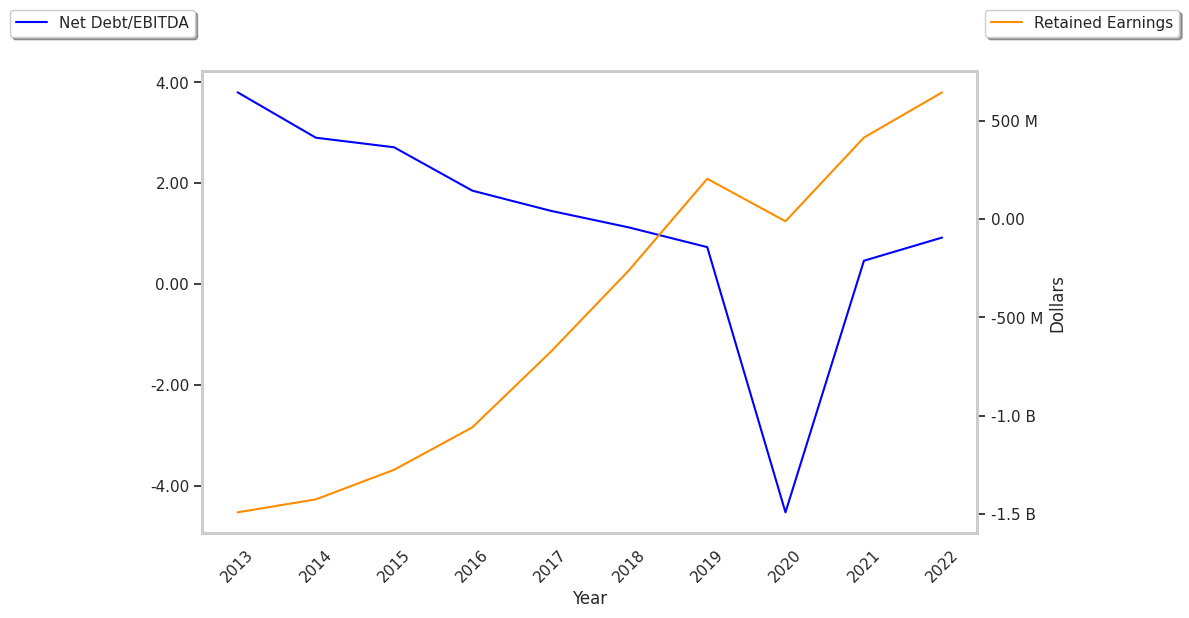One of Wall Street's biggest winners of the day is Burlington Stores, a department store company whose shares have climbed 3.8% to a price of $269.96 -- 23.25% below its average analyst target price of $351.75. BURL may have outstripped the S&P 500 index by 4.0% so far today, but it has lagged behind the index by 22.1% over the last year, returning -5.8%.
Burlington Stores, Inc. operates as a retailer of branded merchandise in the United States and Puerto Rico. The company is a consumer cyclical company, whose sales and revenues correlate with periods of economic expansion and contraction. The reason behind this is that when the economy is growing, the average consumer has more money to spend on the discretionary (non necessary) products that cyclical consumer companies tend to offer. Consumer cyclical stocks may offer more growth potential than non-cyclical or defensive stocks, but at the expense of higher volatility.
Burlington Stores's trailing 12 month P/E ratio is 31.8, based on its trailing EPS of $8.48. The company has a forward P/E ratio of 24.0 according to its forward EPS of $9.62 -- which is an estimate of what its earnings will look like in the next quarter.
The P/E ratio is the company's share price divided by its earnings per share. In other words, it represents how much investors are willing to spend for each dollar of the company's earnings (revenues minus the cost of goods sold, taxes, and overhead). As of the third quarter of 2024, the consumer discretionary sector has an average P/E ratio of 20.93, and the average for the S&P 500 is 29.3.
Another key to assessing a company's health is to look at its free cash flow, which is calculated on the basis of its total cash flow from operating activities minus its capital expenditures. Capital expenditures are the costs of maintaining fixed assets such as land, buildings, and equipment. From Burlington Stores's last four annual reports, we are able to obtain the following rundown of its free cash flow:
| Date Reported | Cash Flow from Operations ($ k) | Capital expenditures ($ k) | Free Cash Flow ($ k) | YoY Growth (%) |
|---|---|---|---|---|
| 2024 | 863,376 | 880,384 | -17,008 | -104.52 |
| 2023 | 868,735 | 492,644 | 376,091 | 152.42 |
| 2022 | 596,385 | 447,393 | 148,992 | -69.0 |
| 2021 | 833,159 | 352,467 | 480,692 | 988.51 |
| 2020 | 219,181 | 273,282 | -54,101 | -109.6 |
| 2019 | 891,725 | 328,357 | 563,368 |
- Average free cash flow: $249.67 Million
- Average free cash flown growth rate: -50.9 %
- Coefficient of variability (the lower the better): 0.0 %
If it weren't negative, the free cash flow would represent the amount of money available for reinvestment in the business, or for payments to equity investors in the form of a dividend. While a negative cash flow for one or two quarters is not a sign of financial troubles for BURL, a long term trend of negative or highly erratic cash flow levels may indicate a struggling business or a mismanaged company.
Value investors often analyze stocks through the lens of its Price to Book (P/B) Ratio (market value divided by book value). The book value refers to the present value of the company if the company were to sell off all of its assets and pay all of its debts today - a number whose value may differ significantly depending on the accounting method.
Burlington Stores's P/B ratio indicates that the market value of the company exceeds its book value by a factor of 11, so the company's assets may be overvalued compared to the average P/B ratio of the Consumer Discretionary sector, which stands at 2.93 as of the third quarter of 2024.
With a higher P/E ratio than its sector average, a higher than Average P/B Ratio, and positive cash flows with a downwards trend, we can conclude that Burlington Stores is probably overvalued at current prices. The stock presents mixed growth prospects because of its decent operating margins with a negative growth trend, and an inflated PEG ratio.



